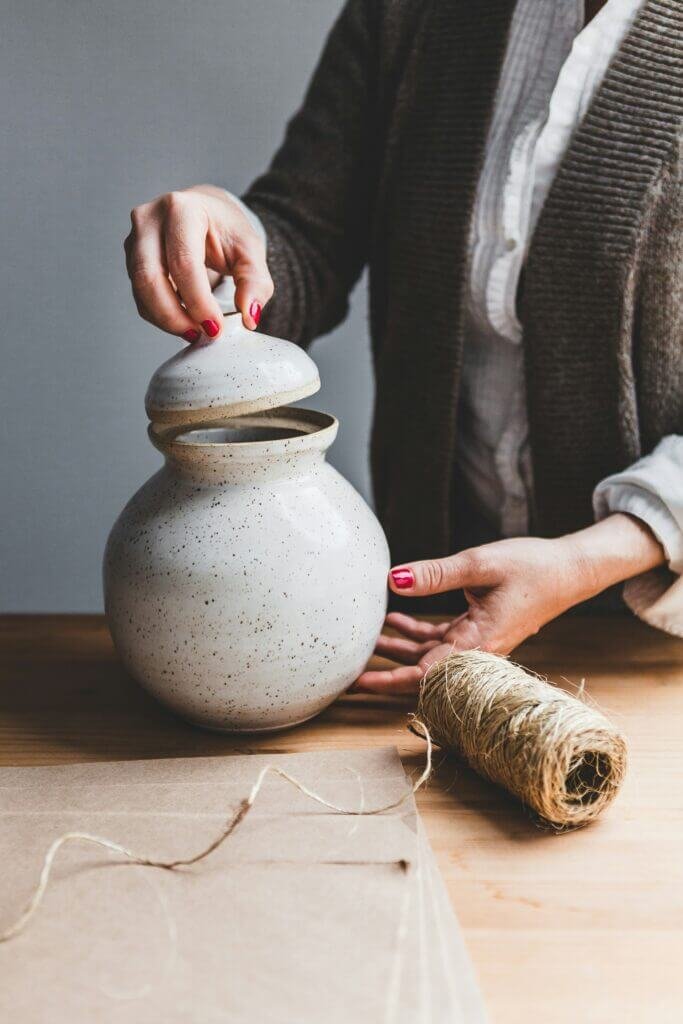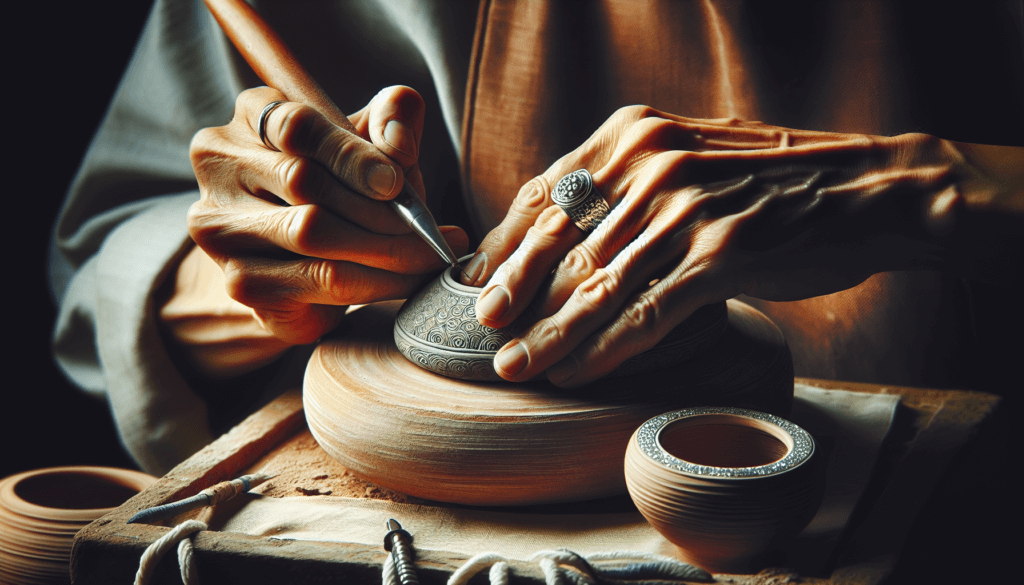You’re about to embark on a fascinating journey understanding what it truly means to be an artisan. Let’s cast aside the stereotypes often associated with this ancient craft, as we explore the unwavering focus, the meticulous touch and the heartfelt passion that truly encapsulate the essence of an artisan. This discussion is designed to decode the term ‘artisan’, shining light upon the mastery and dedication required to earn this prestigious title. So, if you’re curious about the intricacy and the elegance synonymous with being an artisan, this journey awaits you with open arms!

Understanding the Term Artisan
Becoming an artisan means being a master of the delicate balance between craft, passion, creativity, and skill. Today, many may throw the term ‘artisan’ around casually, but let’s dive deeper and truly uncover its weight, origin, and the evolution it has enjoyed over centuries.
Definition of an Artisan
An artisan is a skilled manual worker who crafts items that are functional and often beautiful or decorative. Each item is typically unique, handcrafted, and carries the stamp of the individual artisan’s creativity – a testament to their inimitable artistry. Essentially, the fundamental factor that separates artisans from everyday craftsmen hinges on artistic flair and innovation.
Origins and Evolution of the Term
The term ‘artisan’ evolved from the Latin artisanus, denoting a skilled or manual laborer. Its roots can be traced back to medieval times, where artisans played an integral role in society, crafting essential goods for their communities. Through centuries, artisans have upheld their importance in society, adapting to change, welcoming new techniques and tools, and leaving their indelible mark on many facets of human life.
Artisan Defining Strengths
Artisans, as we understand them today, are defined by several identifying strengths. They are creative, highly skilled, and have an undeniable knack for attention to detail.
Creativity and Innovation
Artisans are inherently creative. They infuse life into their products by coming up with innovative designs and ideas, which they then transform into functionality and form. Their creativity is what sets them apart – enabling them to craft pieces with personality and a story to tell.
Manual Skills and Craftsmanship
An artisan’s craftsmanship is their most valuable asset. Their extensive skills and deftness allow them to shape, mold, weave, carve, or knit raw materials into exceptional pieces of art. This craftsmanship forms the cornerstone of the art that they create.
Precision and Attention to Detail
Exquisite works of art are born from precision and acute attention to detail. The artisan takes great care to ensure every detail is perfect. From initial sketches to final execution, the focus resides on meticulous finesse – a defining signature exclusive to the world of artisans.

Tools and Techniques of an Artisan
The charm of an artisan’s work lies in their ability to adapt and grow while maintaining the traditional methods that define their craft.
Understanding Traditional Methods
Traditional methods form the foundation of an artisan’s expertise, be it weaving, pottery, carpentry, or any other craft. These time-tested techniques, passed down through generations, lend authenticity and a unique essence to their creations.
Adopting New Tools and Technologies
Yet, being an artisan involves more than just sticking to the old ways. Artisans are also innovators who continually explore, adapt, and accept new tools and technologies to enhance their craft.
Maintaining Quality with Tools and Techniques
Whether using ancient methods or modern technologies, an artisan never compromises on quality. Their personal relationship with their craft ensures a high standard of execution, resulting in supreme quality products.
The Artisan Lifestyle
The life of an artisan is one of passion, dedication, and a deep connection with their craft. They are deeply invested in their work, which often blurs the line between their profession and passion.
Daily Tasks and Responsibilities
An artisan’s day isn’t just about crafting. The various tasks extend from sourcing quality raw materials, conceptualizing designs, executing them with precision, to ensuring the final output meets the set standards.
Work-life Balance
In the world of artisans, a clear demarcation between work and personal life often doesn’t exist. Their craft is their life. It’s their way to express, to connect, to contribute, constituting an inseparable part of their existence.
Passion versus Profession
For artisans, the divide between passion and profession is often indistinguishable. Their work is their passion echoed in tangible form. They love what they do, and this love translates into their creations.

Artisan as Entrepreneurs
Artisan-entrepreneurs are those who successfully merge their creative skills with business acumen, converting their passion into a profitable venture.
Starting an Artisan Business
Starting an artisan business involves showcasing your creative skills to the world, setting up a production process, sourcing materials, and managing finances.
Understanding Market Needs
Successful artisans understand their market and create products that resonate with their audience. They recognize the uniqueness of their work and its capacity to fulfill specific needs in the marketplace.
Challenges of Artisan Entrepreneurship
Managing an artisan business comes with its set of challenges, ranging from fierce competition to pricing, sourcing materials, and staying tenacious through the ups and downs of entrepreneurship.
Important Traits and Skills of an Artisan
To be an artisan requires a particular set of traits and skills that go beyond just a love for the craft and ability.
Artistic Sensibility
The essence of being an artisan lies in possessing a strong artistic sensibility. This allows them to visualize, design, and craft unique and inspiring pieces of work.
Patience and Perseverance
Artisanship requires patience and perseverance in spades. From mastering techniques to overcoming failures, the journey of an artisan is one of constant learning.
Physical Stamina and Health
Craftsmanship demands physical stamina and good health. An artisan spends long hours manually crafting their pieces, which necessitates a robust physical constitution.

The Learning Curve of an Artisan
Learning is core to the life journey of an artisan. Most artisans start learning their craft under the wings of a master artisan, while some venture out on their own, driven by their innate passion.
Master and Apprentice Relationship
The master and apprentice relationship is a centuries-old tradition in the world of artisans. The seasoned master imparts valuable skills, while the apprentice learns through observation, practice, and hands-on experience.
Self-taught Artisans
Then, there are self-taught artisans who march to the beat of their drum. They independently explore, learn, experiment, and hone their crafts.
Continuous Learning and Development
Regardless of the avenue chosen for learning, it’s crucial for artisans to keep refining their skills. The learning curve never truly flattens – new trends, technologies, tools continually offer invaluable lessons.
Role of an Artisan in Society
Artisans play a vital role in society, contributing economically and culturally and safeguarding traditional craftsmanship.
Promoting Local Culture
Artisans help promote local culture through their craft, bringing local folklore, traditions, and history to life through their creations.
Preserving Traditional Craftsmanship
By practicing and imparting traditional skills, artisans help preserve age-old craftsmanship that might otherwise be lost over time.
Economic Contribution
Artisans contribute substantially to the economy. They support local economies by creating jobs and marketplaces, giving economic drive to their communities.

The Future of Artisans
No matter how much the world evolves, artisans continue to hold their ground, keeping up with the times, mastering new tools and techniques, and staying relevant to the tastes of new generations.
Influences of Modernization
Modernization poses challenges for traditional artisans but also presents opportunities for growth and innovation.
Staying Relevant in a Digital World
By adapting to digital marketing, online sales, and embracing new technology tools, artisans are managing to stay relevant, competitive, and thrive in today’s digital era.
Upcoming Trends in Artisan Work
Artisans continue to adapt and innovate, embracing upcoming trends like sustainability, local sourcing, and ‘slow movement’ to make their crafts more appealing and relevant.
Different Types of Artisans
Artisans come in diverse shapes and forms – from traditional child apprentices learning ancient techniques to contemporary hobbyists venturing into new fields.
Traditional Artisans
Traditional artisans master their craft from an early age, often following in the footsteps of family tradition.
Contemporary Artisans
Contemporary artisans often choose their path later in life, driven by passion or lifestyle changes. They might pick up ancient practices or forge their unique techniques.
Artisan Roles in Different Industries
Artisans hold diverse roles in myriad industries such as food, fashion, jewelry, furniture, music, and more. Regardless of their domain, they all share a love for craft, a commitment to quality, and a passion for creativity.



